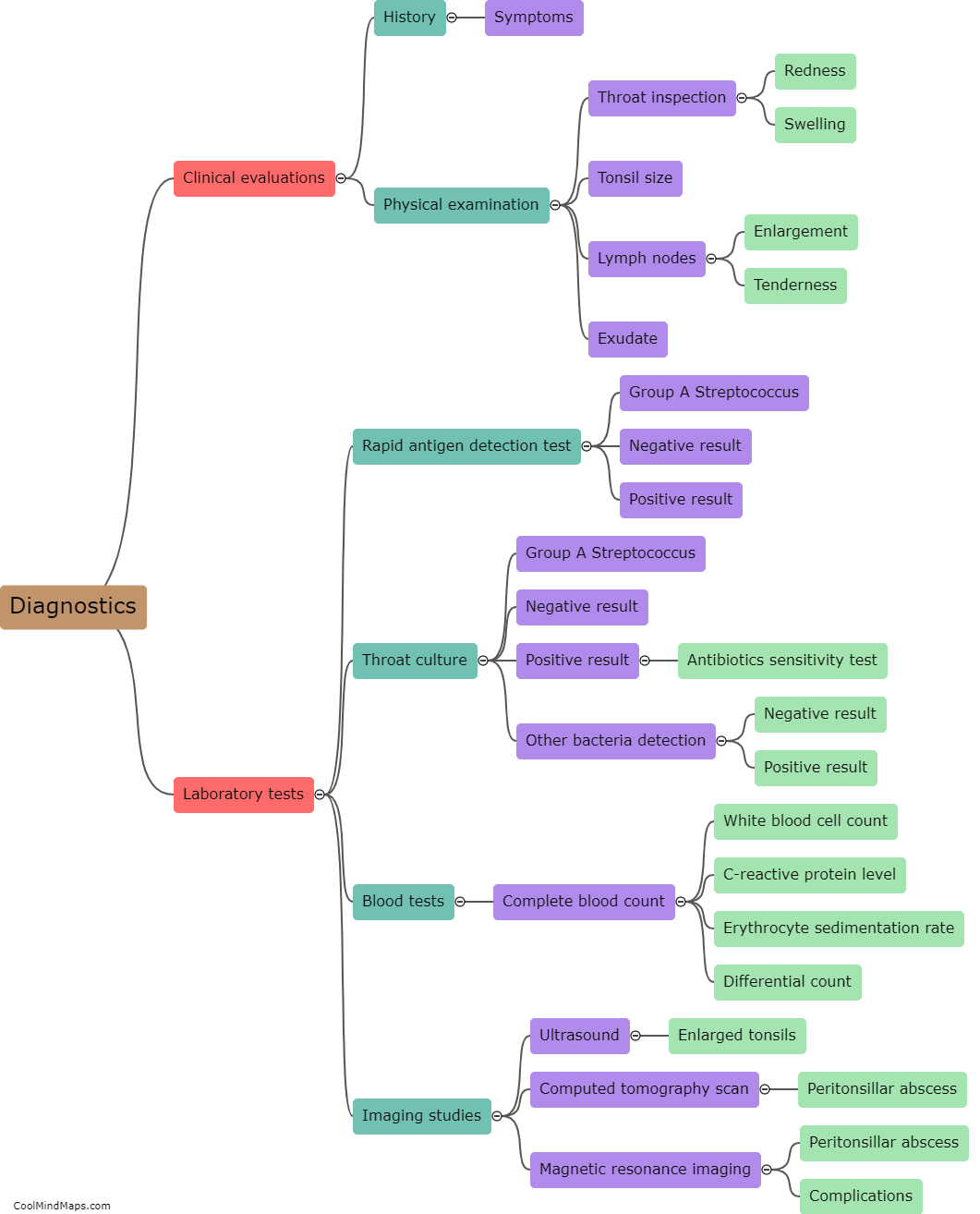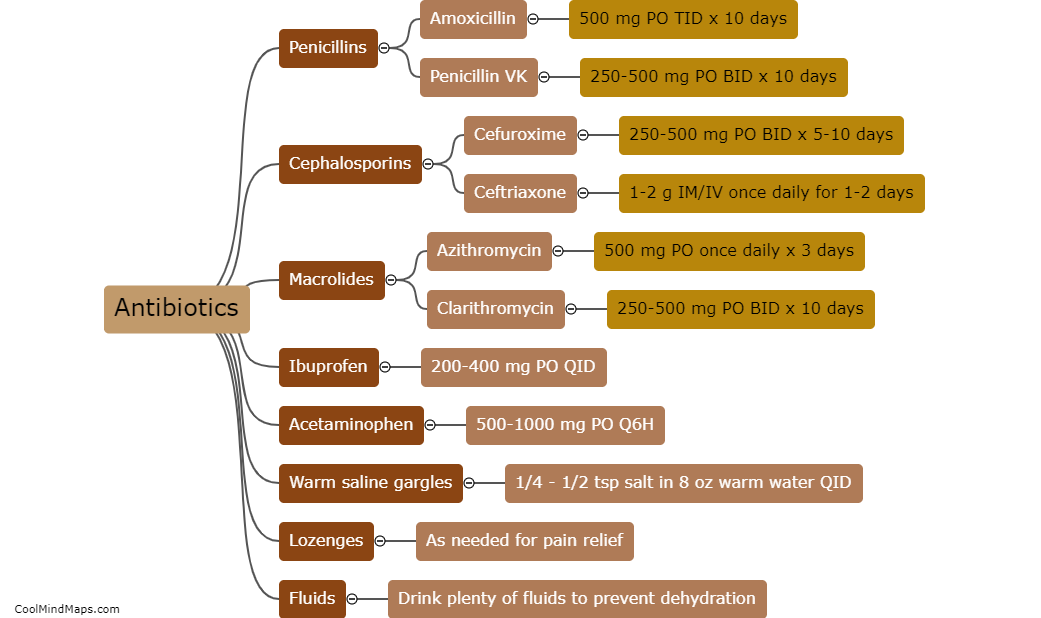Diagnostic methods for acute bacterial tonsillitis
Diagnostic methods for acute bacterial tonsillitis typically involve a combination of clinical evaluation, patient history, and laboratory tests. Initially, the healthcare professional examines the patient's symptoms, which may include sore throat, fever, enlarged tonsils with white or yellow exudates, difficulty swallowing, and swollen lymph nodes. The medical history focuses on factors like recent contact with someone having streptococcal infection or a recurrent tonsillitis pattern. To confirm the bacterial nature of the infection, a rapid antigen detection test (RADT) for Group A Streptococcus is commonly performed. Additionally, a throat culture may be taken to further verify the presence of bacteria, particularly in cases where the RADT is negative but the suspicion of bacterial infection remains high. These diagnostic methods aid healthcare providers in accurately identifying acute bacterial tonsillitis and ensuring appropriate treatment.

This mind map was published on 1 December 2023 and has been viewed 85 times.











